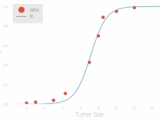Principal Component Analysis for Dimensionality Reduction in Machine Learning
May 4, 2024The success of machine learning algorithms depends on the quality and selection of data used for training. High-aware data, while providing a wealth of information, can also present challenges. As the feature number (dimension) increases, the complexity of the data space explodes. This generation, dubbed the “curse of dimensionality”, creates many problems for machine learning algorithms.
Increased computational cost: Training algorithms on high-dimensional data requires more computational resources and time.
Overfitting: Generalisation can fail with large amounts of data, algorithms at specific points, and unseen data.
Practice Challenges: Analysis of high-dimensional data is representative, which hinders our understanding of the overall structure of the data and the relationships associated with them.
PCA has emerged as a powerful tool to effectively reduce the dimension of data or reduce problems by preserving the most important information.
Literature Review
There are many dimensions to machine learning, each of which complements the technique. Here is a brief description of some popular terms:
Feature Selection:This technique involves selecting features that are most relevant to the learning task. However, characterization can be selective and requires domain knowledge to select the most informative individuals.
Manifold Learning: This method assumes that the data is on a low-dimensional manifold embedded in a high-dimensional space. The purpose of the Manifold Gender technique is to identify these underlying manifold techniques for further analysis. However, this may be a computational formulation and may not be suitable for all data structures.
PCA provides a complementary approach. Unlike feature selection alternatives, which explicitly select specific features, PCA identifies a new set of features, called principal components (components), which are linear combinations of features. Because these PCs capture data differently, PCs store the least amount of data we have.
Process
A separate step of PCA – definition of ownership – includes:
Data Standardization: Fixed data leverage to ensure zero mean and unit variance across all attributes Previous results. This prevents large-scale features from forming on the variance count.
Covariance Matrix Calculation: The covariance matrix captures the specific linear relationship between data. This shows how clearly the similarities differ.
Eigenvalue decomposition: Eigenvalue decomposition of the covariance matrix yields eigenvectors and eigenvalues, which are suitable for identifying principal components. Eigenvectors indicate the direction of greatest variation in the data, while eigenvalues determine the amount of variation associated with each eigenvector.
Dimension Selection: It involves selecting the number of PCs of critical decisions. The “elbow method” is a common technique explained by each PC variance ratio analysis. We generally choose those that capture the PC portion of the total variance, for which dimensionality reduction and information preservation form a good balance.
Change: The last element involves projecting the selected key element data. Commands are low dimensional representations of specified data, suitable for additional analysis and machine learning tasks.
Result
PCA offers several advantages that make it a valuable tool in machine learning:
Low Computational Cost: Low dimensional data enables faster training times for native machine learning algorithms, making them more functional and scalable.
Improved peak performance: By addressing the position curse, PCA can reduce overfilling and improve the productivity of machine learning scores.
Advanced explanation: PC is seen with higher indices of greatest variance, PCA supports less spatial dimensional data. This allows us to better understand the underlying structure and attribute relationships of the data.
Feature Engineering: PCA-derived principal components can be used as new features for machine learning algorithms. These highest-quality data capture quantitative information, improving the best designs.
Discussion
The effectiveness of PCA depends on the data and the specific application. When data shows symptoms with lack of key elements.



